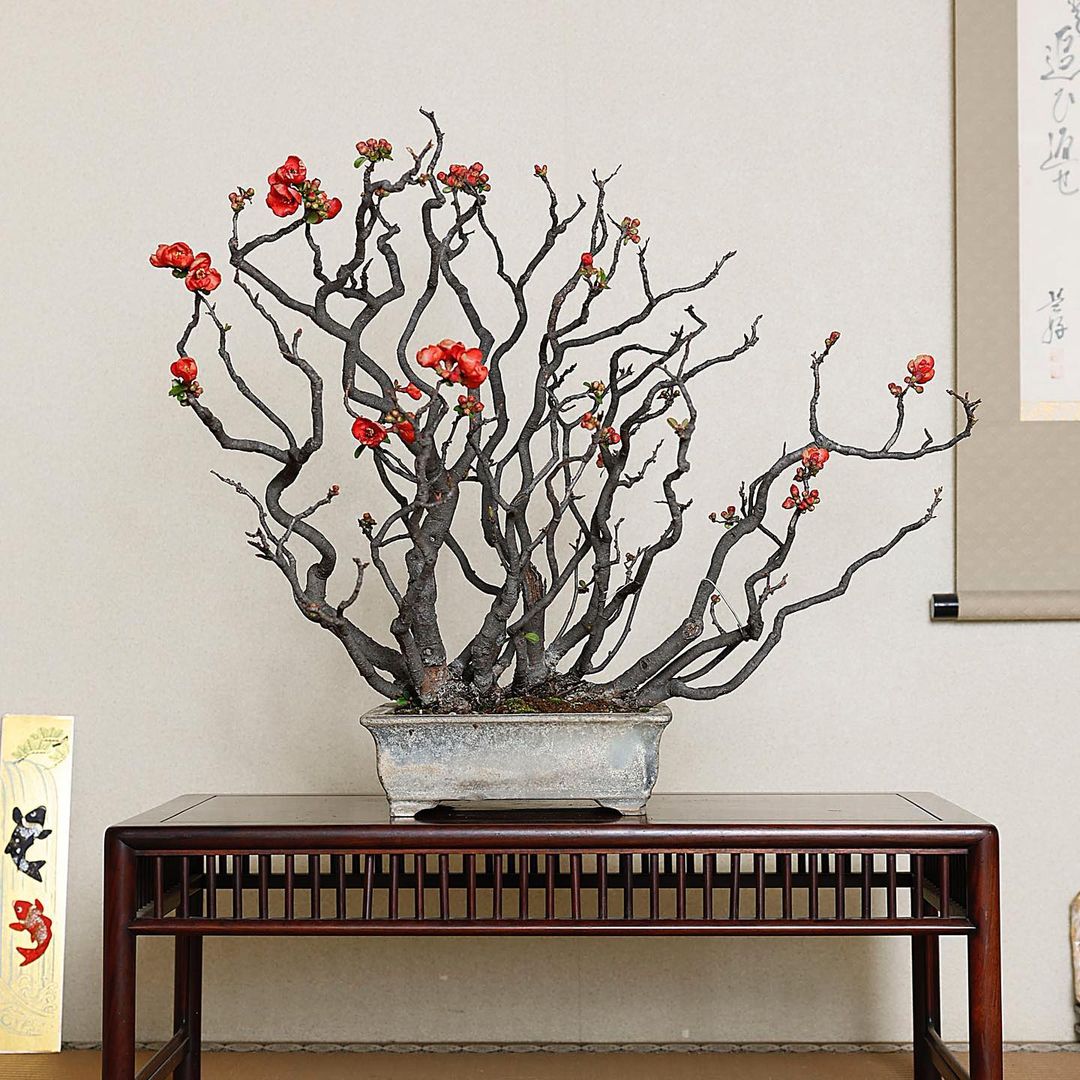Bonsai is essentially the art of choosing a plant which has the potential of becoming a good bonsai, then growing it under complete, constant, and affectionate care so that it blends with the container in which it is planted to express a natural beauty. It follows, then, that adequate sun-shine, water, fertilizer, and suitable soil are necessary for healthy growth. At the same time, careful trimming, pruning, repotting, wir-ing, and other techniques are required to form the trees into the desired shape.
As the result of such care, miniature growth is finally accom-plished.
Miniaturizing, however, is not the aim of growing bonsai, but the consolidated result of efforts to grow a healthy tree, providing correct and timely training for the specimen.
The tree should be made small, but adequate nourishment should always be provided; thus the tree is not deprived for the purpose of dwarfing.
If existing bonsai were not healthy and strong, how could they have lived for hundreds of years?
Bonsai, as explained in later chapters, are variously grown from seed, collected from nature, grafted, and layered and divided. The ultimate goal is to cultivate plants by the above methods so that they are small in size, yet have the appearance of being seasoned and aged. The special characteristic of bonsai is that they express the various features of natural trees, even though cultured in an artificial environment.
How is miniaturizing possible? A single technique is not adequate to make a tree small. The fact that the plant is grown in a container, and also the trimming, pruning, repotting, trunk correction, and other care given the tree all contribute to the final result of healthy, but limited, growth. Dwarfed trees are often found even in a natural environment.
In bonsai, this environment is provided artificially and purposely, but with a good knowledge of the botanical principles of growth.
Following are some of the main factors which contribute to the limited growth of bonsai plants.

